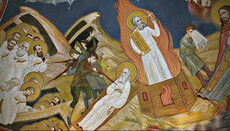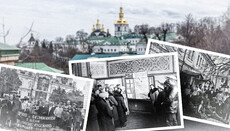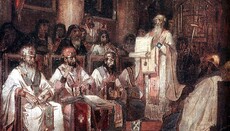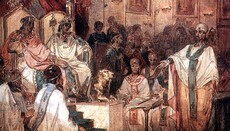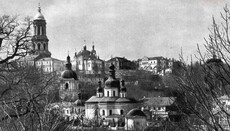"Thalerhof" – forgotten pages of the Rusyn genocide
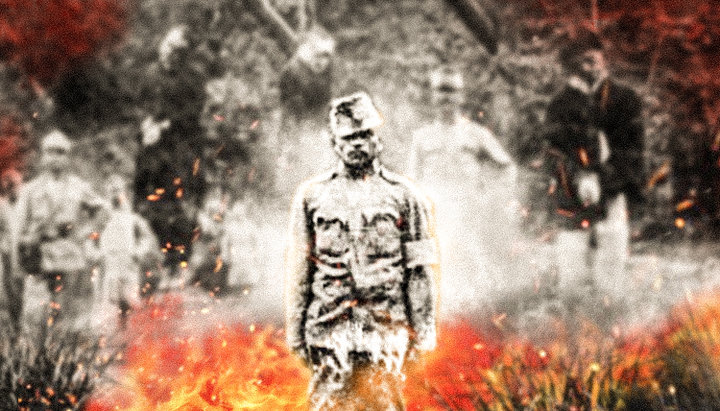
September 4 marked the 106th anniversary of the creation of the world's first concentration camp "Thalerhof", where thousands of Galicians and Bukovinians died.
On September 4, 1914, about 2,000 Carpatho-Rusyns, Bukovinians and Russian Galicians were herded into a large section of the field in the form of a long quadrangle, in a sandy valley at the foot of the Alps, near Graz, the main city of Styria, which later became known as “Thalerhof”.
A piece of bare land was surrounded with barbed wire and wooden stakes, and the people were laid on the damp ground with bayonets and rifle butts. Eyewitnesses testified that the bare field moved like a large anthill; the ground could hardly be seen due to the masses of people of all ages and strata. In fact, "Thalerhof" became the first concentration camp in the world and very soon was turned into the cruellest torture chamber of all Austrian prisons in the Habsburg Empire. Who was kept there and what was their guilt?
Origins of "Thalerhof"
For three quarters of a century, namely from 1772 to 1848, the Austro-Hungarian government agreed that the people of Galicia considered themselves Russians. In the official documents of the Empire, the Galicians were called Russen, i.e. Russians or Rusyns. However, starting from 1848, primarily representatives of the so-called “Polish intelligentsia and aristocracy” became the initiators of an active policy of Polonization and Catholicization of the indigenous Russian population of Galicia.
In 1848, the Governor of Galicia, Count Stadion, ordered the Russians to be called Ruthenes. Soon after that, a real propaganda machine was deployed, the main task of which was to create an artificial opposition of "Russians" and "Ruthenes". The propagandists claimed that these were two completely different peoples, and to separate them was a priority.
A few years later, in the 60s, the Polish aristocracy threw forces to create the Latin alphabet instead of the Cyrillic alphabet, which led to massive protests of the local population. For a while, everything calmed down and the Habsburgs left the Russian Galicians alone. But the period of relative calm did not last long.
In 1890, as a result of the so-called "Great Break" policy, the representatives of Galicia who consider themselves separate from the Russian people, entered into an agreement with the authorities of Austria-Hungary, according to which they swore allegiance to the Vatican, loyalty to Austria, and promised to be in alliance with the Poles.
Almost immediately, new spelling was introduced, Galicians were no longer called "Russians", and anyone who disagreed with called the enemies of the Austro-Hungarian Empire. At the beginning of the 20th century, the real genocide of the Russian-speaking population began in territories of Galicia, Bukovina and Pre-Carpathian Rus’.
Thus, all Russophiles were declared “Muscovites” and “agents of Moscow” generously paid for their views with “Tsarist rubles”. Denunciations, very often initiated by representatives of the Union, were poured in abundance against the Orthodox clergy and intelligentsia. Very soon reports to the authorities grew into the direct physical destruction of both Orthodox priests and ordinary villagers who did not agree with the tactics of Catholicization.
All Russophiles were declared “Muscovites” and “agents of Moscow” generously paid for their views with “Tsarist rubles”.
But if at first the killings were chaotic and were caused rather by cruelty and anger towards the Russians and the Orthodox, then later it was decided to give them a systematic character. It was for this purpose that the authorities created the world's first concentration camps "Terezin" and "Thalerhof".
Inferno
The “Thalerhof” camp very quickly turned into a real hell for Rusyns and Russian Galicians. Until the winter of 1915, there were no barracks on its territory, and people just lay on the ground in the open air in the rain and frost. Lice, insects, worms literally destroyed people. On December 11, 1914, the Russian priest Ioann Maschak wrote in his later notes that 11 people were simply "bitten" by lice. The appalling lack of sanitation resulted in terrible that killed hundreds of captives.
With the onset of cold weather in the autumn of 1914, the authorities ordered the prisoners to build barracks for themselves with a capacity of 300 people. However, overcrowding, cramped conditions and the same unsanitary conditions led to the fact that cholera, typhoid fever, diphtheria, malaria, consumption, flu began to rage in the barracks very soon, and many prisoners suffered from blood vomiting.
In addition to diseases, the Germans used hunger, and if they gave dog or horse meat, they accompanied these handouts with terrible beatings, after which many prisoners returned to the barracks crippled.
The same priest Ioann Maschak testified in his later notes that on December 3, 1914, a sentry fired at a peasant climbing over a wire behind the barracks. The bullet did not hit him but killed Ivan Popik from Medinichi village, the father of 7 children, in the barracks. In the hangar, a soldier stabbed to death the peasant Maxim Shumnyatski from the village of Isai, Turka district.
It was not only peasants who died in “Thalerhof”. Thus, according to preliminary data alone, dozens of Orthodox priests, as well as representatives of the intelligentsia, were tortured and killed in the camp, including Mikhail Lyudkevich, professor of the Przemysl Theological Seminary, Doctor of Theology; Priest, Doctor of Theological Sciences Nikolai Malinyak from Slavnitsyn; Doctor of Medical Sciences Mikhail Sobin, and many others.
Not only soldiers but also doctors were especially cruel towards prisoners. Examining the sick, they, being afraid of getting infected, simply poked the bodies of people with sticks, thus checking whether a person had life signs.
It is clear that no medication was used in “Thalerhof”. The only remedies were some kind of stinking ointment and naphthalene, which the "doctors" simply covered people with from head to toe so that they were suffocating from it.
Dionysius Kisel-Kiselevsky, a Bukovinian priest and a “Thalerhof” prisoner, wrote: “During our stay in this camp, our life always hung by a thread, if not from the diseases that raged here, then from a tin bullet or a steel bayonet of the first sentry that came across.”
All these atrocities outraged even the authorities. So, the deputy of the Austrian parliament, Czech Yuri Strshybrny, noted in his speech of June 14, 1917, that according to his data received from 70 "Thalerhof" captives, about 2,000 people were buried in the territory of the concentration camp.
“During our stay in this camp, our life always hung by a thread, if not from the diseases that raged here, then from a tin bullet or a steel bayonet of the first sentry that came across.”
Priest Dionysius Kisel-Kiselevsky, a “Thalerhof” prisoner
Pole Sigismund Lyasotsky, a member of the same parliament, said in his speech of March 12, 1918, that until 20 February 1915 there were 1,360 seriously ill people in “Thalerhof”, of whom 1,100 died in terrible agony. All in all, according to him, 15% of “Thalerhof” prisoners, i.e. over 3,000 Galicians and Bukovinians, died out in a year and a half.
On November 9, 1914, according to the official report of Field Marshal Schleer, there were 5,700 Ukrainians, Carpatho-Rusyns and Lemkos in “Thalerhof”. In total, 20,000 people were prisoners of the concentration camp from September 4, 1914, to May 10, 1917.
Position of "patriots"
Interestingly, representatives of the so-called "Ukrainian parties" of Galicia and Bukovina, who considered themselves real patriots, took a very active part in filling “Thalerhof” with unreliable elements and "agents of Moscow" from the government's point of view. The “Dilo” and “Svoboda” newspapers literally swarmed with denunciations, on the basis of which hundreds of people were arrested.
In addition, "patriots" also took part in direct acts of violence. For example, the Ukrainian "Sichoviks" in Lavochne village in the Carpathians attempted to bayonet the transported “Katsaps” (a term of abuse for Russians – Trans.), among whom there was not a single native of Russia, but only their own Galicians.
During the convoy by "Sichoviks" prisoners from the Brygidki prison to the main Lviv railway station, 17 people, including Orthodox priests, were hospitalized after terrible beatings.
Moreover, the "Sichoviks" were also involved in direct arrests of dissidents, carried out massacres with impunity and revelled in their permissiveness. Here is the so-called "Sichova Song", typical for them, written down by Petro Oliynyk, a resident of Kutische village, Brody district:
Украiнцi п`ють, гуляють,
А кацапи вже конають.
Украiнцi п`ють на гофi,
А кацапи в Талергофi.
Де стоїть стовп з телефона,
Висить кацап замiсть дзвона
Уста йому посинiли,
Чорнi очi побiлiли,
Зуби в кровi закипiли,
Шнури шию переїли.
Ukrainians are drinking and celebrating,
While Katsaps are already dying.
Ukrainians are drinking on the hof,
And Katsaps’re in Thalerhof.
Where is a telephone pole,
A Katsap is hanging instead of a bell.
His mouth got blue,
Black eyes got white,
His teeth boiled in blood,
The ropes cut his neck.
(Free translation – Ed.)
Pole Sigismund Lyasotsky said in his speech of March 12, 1918 that until 20 February 1915 there were 1,360 seriously ill people in “Thalerhof”, of whom 1,100 died in terrible agony.
In issue No. 32 of the “Novy Chas” (“New Time”) newspaper (Lviv, February 11, 1934), one of the local "patriots" writes: “Our "Russen" survivors have activated, and this is what we should pay attention to and not take it lightly but root out the weeds, which only thanks to our kindness (!?) still have not disappeared yet”.
Conclusions
In May 1917, Kaiser Charles I of Austria ordered to close the “Thalerhof” concentration camp. However, he noted in his rescript: "All arrested Russians are not guilty but were arrested so as not to become ones." Their guilt was apparently their unwillingness to cultivate a bestial hatred of the Russian people. They did not understand why and for what it was necessary to kill "Muscovites" and "Katsaps". Neither did they want to betray their Orthodox faith, to become Catholics and take an oath of allegiance to the Vatican. All these people wanted was to live peacefully in their homeland and pray to God.
Unfortunately, Ukrainian textbooks are silent about “Thalerhof” and “Terezin”. They are silent because it is inconvenient to tell the truth about how part of our people was subjected to genocide by educated and civilized Europeans. At the same time, the lessons of history must not be forgotten because even today we increasingly see that a person who goes to "the wrong church" or speaks "the wrong language" can be beaten or humiliated.
We are witnessing how even officials allow themselves to sing "folk" songs on the doorsteps of "Orthodox" churches, calling for violence against people of other nationalities. If now our society does not respond to such incidents, any manifestation of violence is not strongly condemned, and pseudo-patriotism does not cease to be heroized, then we have every chance to fall into utter aggression and anger. Ukraine has already drowned in blood, and God forbid that this should happen again.

